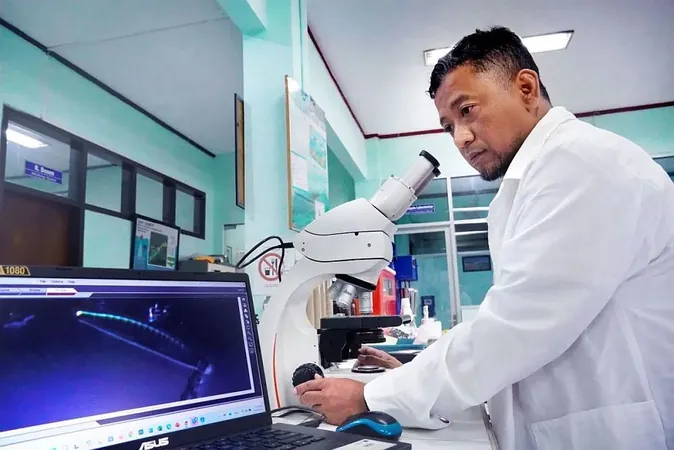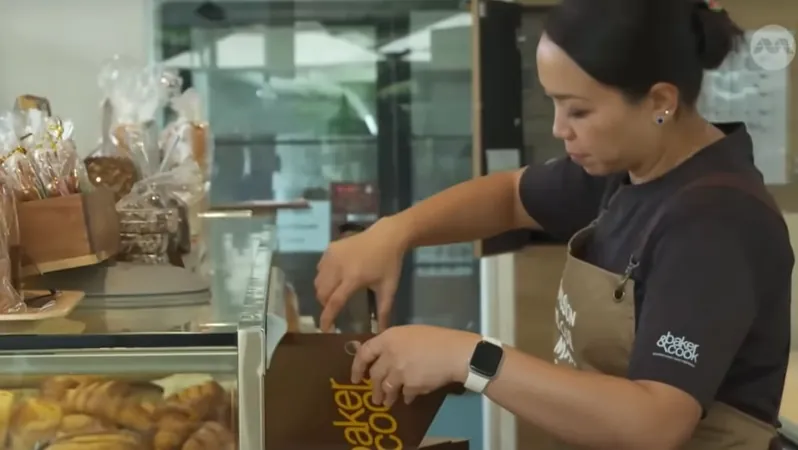
Revolutionary Microalgae Discoveries Unveiled in Indonesia's Rich Waters!
2025-06-24
Author: Ming
Two New Genera of Microalgae Discovered!
In an exciting breakthrough, a dedicated research team from Brawijaya University has successfully identified two brand new genera of microalgae in Indonesia, specifically around Bawean Island and Tomini Bay. This impressive find promises to enhance our understanding of marine biodiversity!
Honoring a Great Naturalist
The newly named genera, Paracatenula and Wallaceago, pay tribute to renowned naturalist Alfred Russel Wallace, an iconic figure in the study of species distribution. His legacy lives on through this pivotal discovery.
Meet the New Species!
Alongside the two new genera, the research unveiled even more thrilling discoveries, including the newly described species: Paracatenula porostriata and Wallaceago porostriatus. Paracatenula porostriata is a unique entity with a circular shell structure featuring tiny pores, while Wallaceago porostriatus boasts a striking diamond-shaped appearance with intricate lines adorning its lower surface.
A Treasure Trove of New Discoveries!
But that’s not all! The research team also highlighted several new species within the existing genera Catenula and Catenulopsis. Four new species emerged from Catenula, namely Catenula boyanensis, Catenula komodensis, Catenula decusa, and Catenula densestriata, discovered in stunning locations including Bawean Island and Tiga Warna Beach.
Additionally, Catenulopsis baweana was identified, aptly named after its Bawean origin. This collaboration involved international experts from Poland and the United States, showcasing a global commitment to marine research.
A Vital Contribution to Ecosystem Health
The research, spanning from 2021 to 2024, utilized advanced techniques like light and scanning electron microscopy to analyze samples from coral reefs and sediment. Oktiyas Muzaky Luthfi, head of the research team, emphasized the critical role of microalgae in our ecosystem, stating they are responsible for a staggering 20% of the Earth’s oxygen production!
This groundbreaking research not only aids in monitoring marine environments but also enriches our understanding of tropical aquatic ecology and paleoecological studies. Luthfi remarked, "This proves that Indonesia's oceans harbor an abundance of microscopic life that we have yet to fully explore!"




 Brasil (PT)
Brasil (PT)
 Canada (EN)
Canada (EN)
 Chile (ES)
Chile (ES)
 Česko (CS)
Česko (CS)
 대한민국 (KO)
대한민국 (KO)
 España (ES)
España (ES)
 France (FR)
France (FR)
 Hong Kong (EN)
Hong Kong (EN)
 Italia (IT)
Italia (IT)
 日本 (JA)
日本 (JA)
 Magyarország (HU)
Magyarország (HU)
 Norge (NO)
Norge (NO)
 Polska (PL)
Polska (PL)
 Schweiz (DE)
Schweiz (DE)
 Singapore (EN)
Singapore (EN)
 Sverige (SV)
Sverige (SV)
 Suomi (FI)
Suomi (FI)
 Türkiye (TR)
Türkiye (TR)
 الإمارات العربية المتحدة (AR)
الإمارات العربية المتحدة (AR)